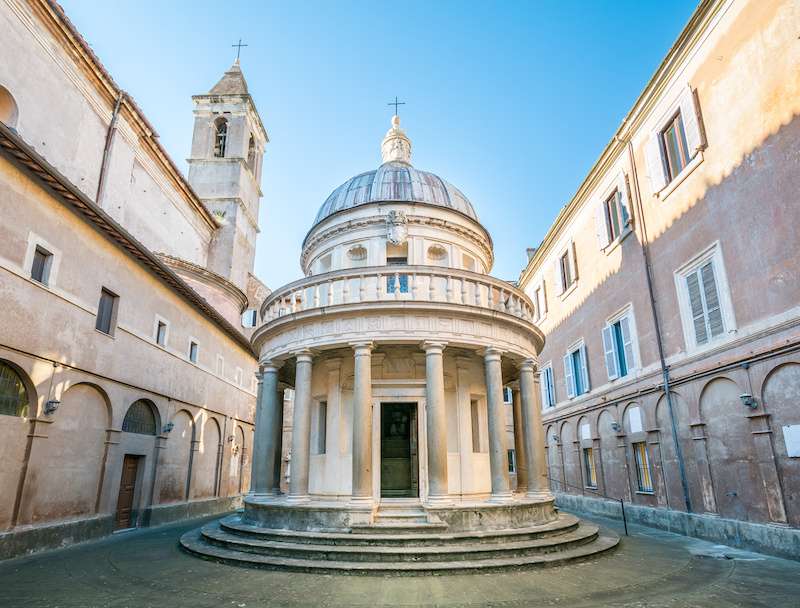Temple of Bramante, also known as the Temple of San Pietro Montorio, is a small circular building edified where St. Peter was crucified.
Considered to be the prototype of the famous Basilica of St. Peter in The Vatican, The Temple of Bramante was built at the beginning of the 16th century by Donato Bramante under the commission of the Spanish Royal family.
Book a private tour of Rome with us and discover more about the amazing Temple of Bramante!
The origins of the name and its historical references
The church of S.Pietro in Montorio stands on the place where, according to tradition, the apostle Peter was crucified on the cross upside down, although history holds that the martyrdom of S.Pietro occurred in the Circus of Caligula and Nero in the ager Vaticanus (corresponding to the current left side of the Vatican Basilica).
The name “Montorio” is a corruption of “Mons aureus” or “Monte d’oro”, for the yellow marl, also called “mica aurea“, which composes the Janiculum hill on which the church resides.
The building consists of a dome surrounded by 16 columns made of granite, located on top of a short circular staircase.
The dome is definitely the most complex part of this building; the inspiration to build it this way came from the ancient Romans. The dome is placed on a tambour and it’s made of cement conglomerate.
Its interior seems very wide even though it’s actually quite small. It has deep and high niches placed all along the walls and four of these have small statues of the Evangelists.
On the altar, we can find the Statue of Saint Peter, made by an artist from the Lombard school that we, unfortunately, don’t know the name of. The floor of this temple is made of polychrome marble tiles and right under the floor, there is a crypt with a hole in the ground that was created by Saint Peter’s cross. This hole is protected by a plaque.
The Temple of Bramante is considered one of the most representative architectural pieces of the Renaissance. Donato Bramante surely managed to put together multiple architectural styles, going from the classics to the baroque with ease.


